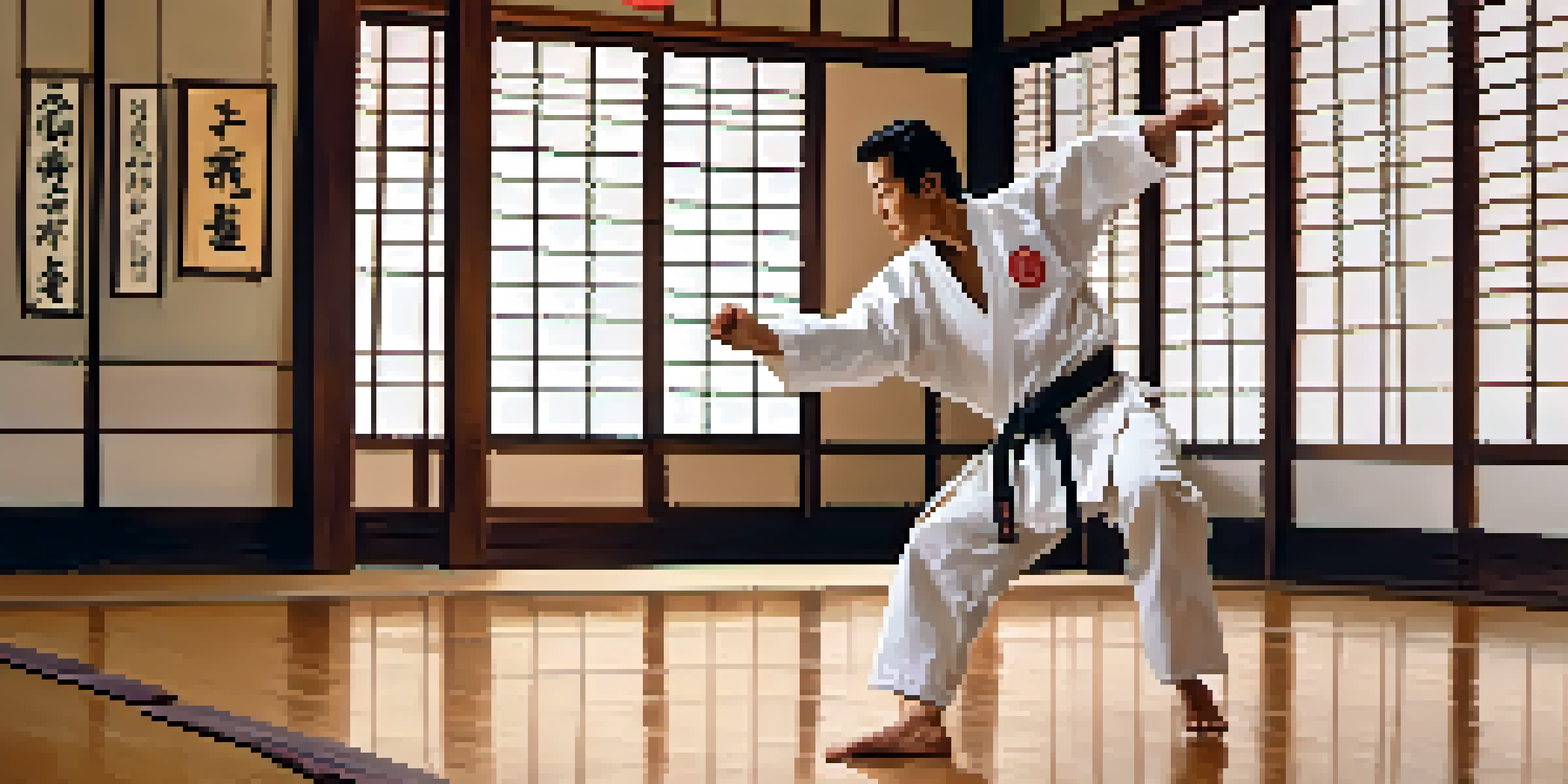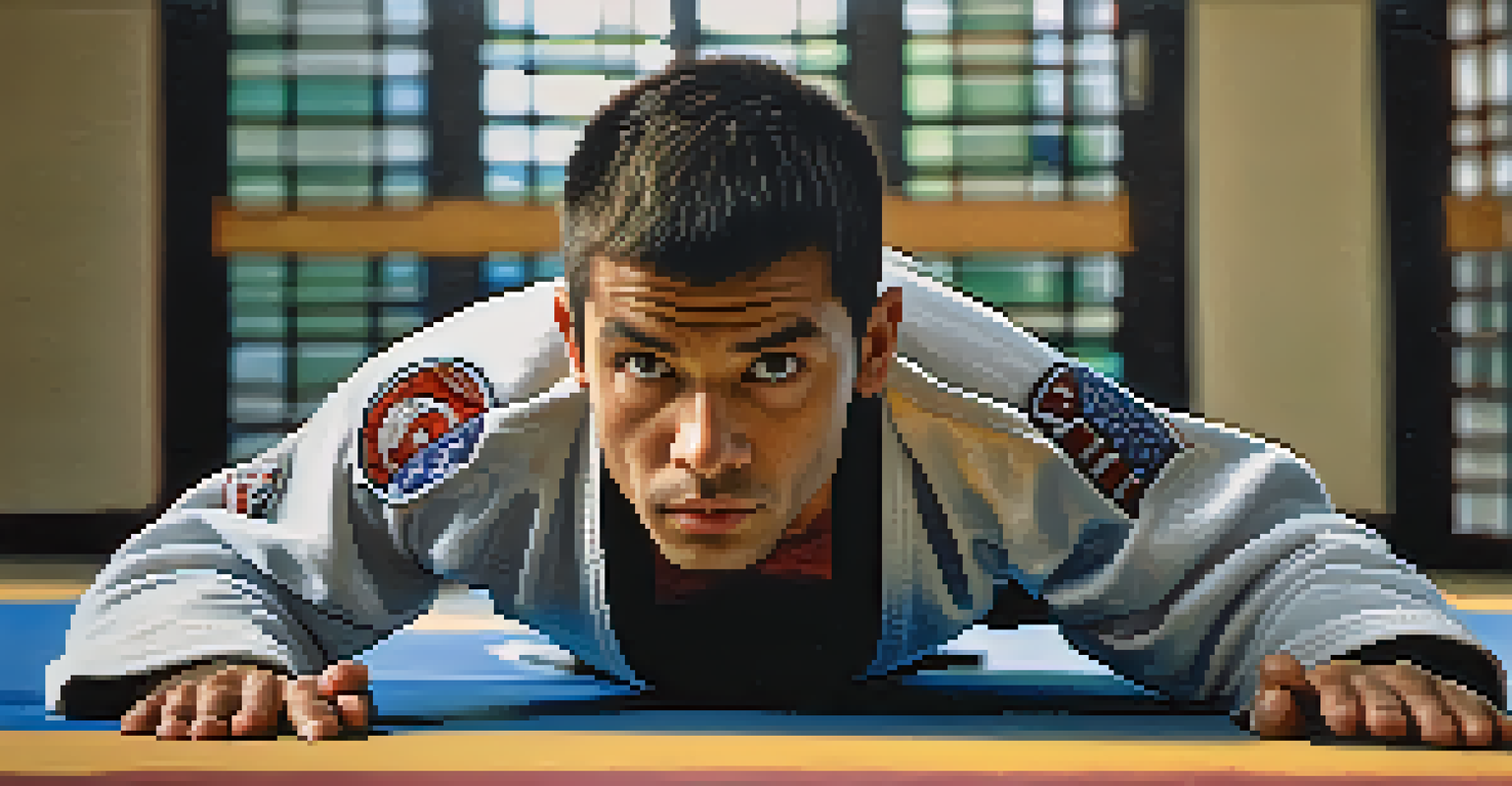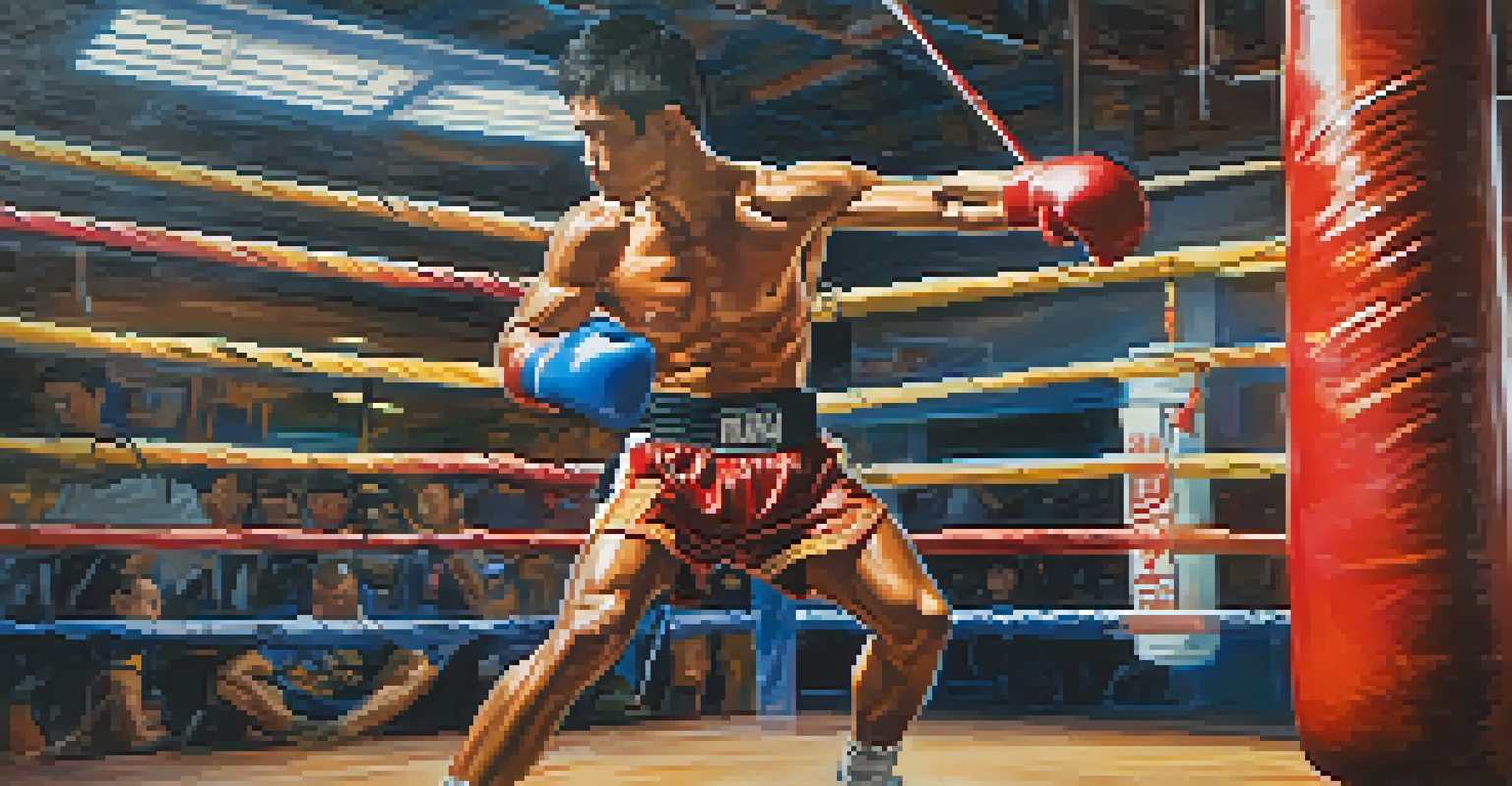Martial Arts Styles: Effective Techniques for Self Defense

Understanding the Importance of Self-Defense
Self-defense is not just about physical strength; it's about confidence and awareness. Knowing how to protect yourself can empower you in everyday situations, making you feel more secure. It's essential to understand that self-defense skills can help you avoid physical confrontations whenever possible.
The best defense is a good offense.
In today's world, personal safety is a priority for many. Whether you're walking alone at night or facing an aggressive situation, being trained in self-defense can make a significant difference. It's about being prepared and knowing how to react appropriately when necessary.
Related Resource
Moreover, self-defense training often teaches valuable life skills, such as discipline and focus. These skills can extend beyond physical confrontations, positively impacting various aspects of your life, from professional settings to personal relationships.
Choosing the Right Martial Arts Style for You
With so many martial arts styles available, choosing the right one can feel overwhelming. Each style has unique techniques and philosophies, so it's essential to consider what resonates with you. For example, if you're looking for a more fluid and artistic approach, styles like Tai Chi or Aikido may appeal to you.

On the other hand, if you're interested in practical self-defense techniques, styles like Krav Maga or Brazilian Jiu-Jitsu might be more suitable. It’s helpful to research various styles and perhaps even attend a few introductory classes to see what fits your personality and goals best.
Self-Defense Empowers Confidence
Learning self-defense not only enhances personal safety but also fosters confidence and awareness in everyday situations.
Remember, the best martial arts style is the one that not only teaches you effective self-defense but also keeps you motivated and engaged. Enjoying the learning process will make it easier to commit to regular practice and improvement.
Key Techniques in Karate for Self-Defense
Karate is well-known for its powerful strikes and defensive techniques. One of the fundamental techniques is the 'front kick,' which can create distance between you and an attacker. The ability to deliver strong, controlled kicks can be a game-changer in self-defense situations.
The most important thing in self-defense is not to get into a fight in the first place.
Additionally, blocking techniques are crucial in Karate. Learning how to effectively block incoming strikes not only protects you but also opens opportunities for counter-attacks. This balance of offense and defense is what makes Karate a practical choice for self-defense.
Related Resource
Moreover, Karate emphasizes mental discipline and respect, which are essential aspects of any self-defense scenario. Understanding when to engage and when to walk away can often be the best defense of all.
Effective Techniques from Brazilian Jiu-Jitsu
Brazilian Jiu-Jitsu (BJJ) focuses on ground fighting and grappling techniques, making it highly effective for self-defense. One key technique is the 'guard position,' which allows you to control an opponent even if they are larger or stronger. This aspect of BJJ can be particularly beneficial for individuals who may not have the physical strength of their attacker.
Another important technique is the 'rear-naked choke,' a method used to subdue an opponent without causing long-term harm. This technique emphasizes leverage over brute strength, showcasing the intelligence behind BJJ training. It’s not just about fighting; it’s about strategy and control.
Choose the Right Martial Art
Selecting a martial arts style that resonates with you is crucial for effective self-defense training and long-term commitment.
BJJ training also fosters a sense of community and support. Practitioners often train with partners, which helps build confidence and adaptability in various scenarios, making it not just a physical exercise, but a mental one as well.
Krav Maga: Techniques for Real-World Situations
Krav Maga is known for its practical and no-nonsense approach to self-defense. Developed for the Israeli military, it focuses on real-life scenarios, teaching techniques that can be applied in various situations. For example, techniques for defending against armed attackers are a key component of Krav Maga.
One of the standout features of Krav Maga is its emphasis on instinctive movements and natural reactions. Training often includes drills that help you respond quickly and effectively under pressure, which can be invaluable in a self-defense situation. This training prepares you not just physically, but mentally as well.
Related Resource
Moreover, Krav Maga encourages awareness of your surroundings, teaching practitioners to avoid dangerous situations before they escalate. This proactive approach to self-defense is a major advantage, helping you stay safe even before a confrontation arises.
Muay Thai: Striking Techniques for Self-Defense
Known as the 'Art of Eight Limbs,' Muay Thai incorporates strikes using fists, elbows, knees, and shins. This variety of striking techniques enables practitioners to defend themselves from multiple angles, making it a versatile choice. For instance, the elbow strike can be particularly effective in close-range confrontations.
In addition to striking, Muay Thai training involves clinch work, where practitioners learn to control opponents by grappling. This skill can be crucial in self-defense situations, helping you neutralize an aggressor’s movements. Understanding the clinch can give you an advantage when dealing with larger opponents.
Mental Preparedness is Key
Mental readiness and situational awareness are just as important as physical skills in effectively handling potential threats.
Training in Muay Thai also builds physical fitness and mental resilience. The rigorous workouts improve stamina and strength while instilling a sense of discipline. This holistic approach to training can enhance your overall confidence and preparedness for any self-defense scenario.
The Role of Mental Preparedness in Self-Defense
While physical techniques are essential in martial arts, mental preparedness is equally important. Being aware of your surroundings and maintaining a calm mindset can significantly influence your response to a potential threat. This mental aspect often separates those who can effectively defend themselves from those who struggle under pressure.
Training in martial arts often includes exercises focused on building mental resilience and situational awareness. For example, drills that simulate real-life confrontations can help you practice staying calm and making quick decisions. This practice can be invaluable in real-world situations where split-second reactions are necessary.

Ultimately, self-defense is about more than just physical techniques; it’s about being mentally equipped to handle unexpected situations. Embracing this mindset can empower you to navigate challenges with confidence and poise.